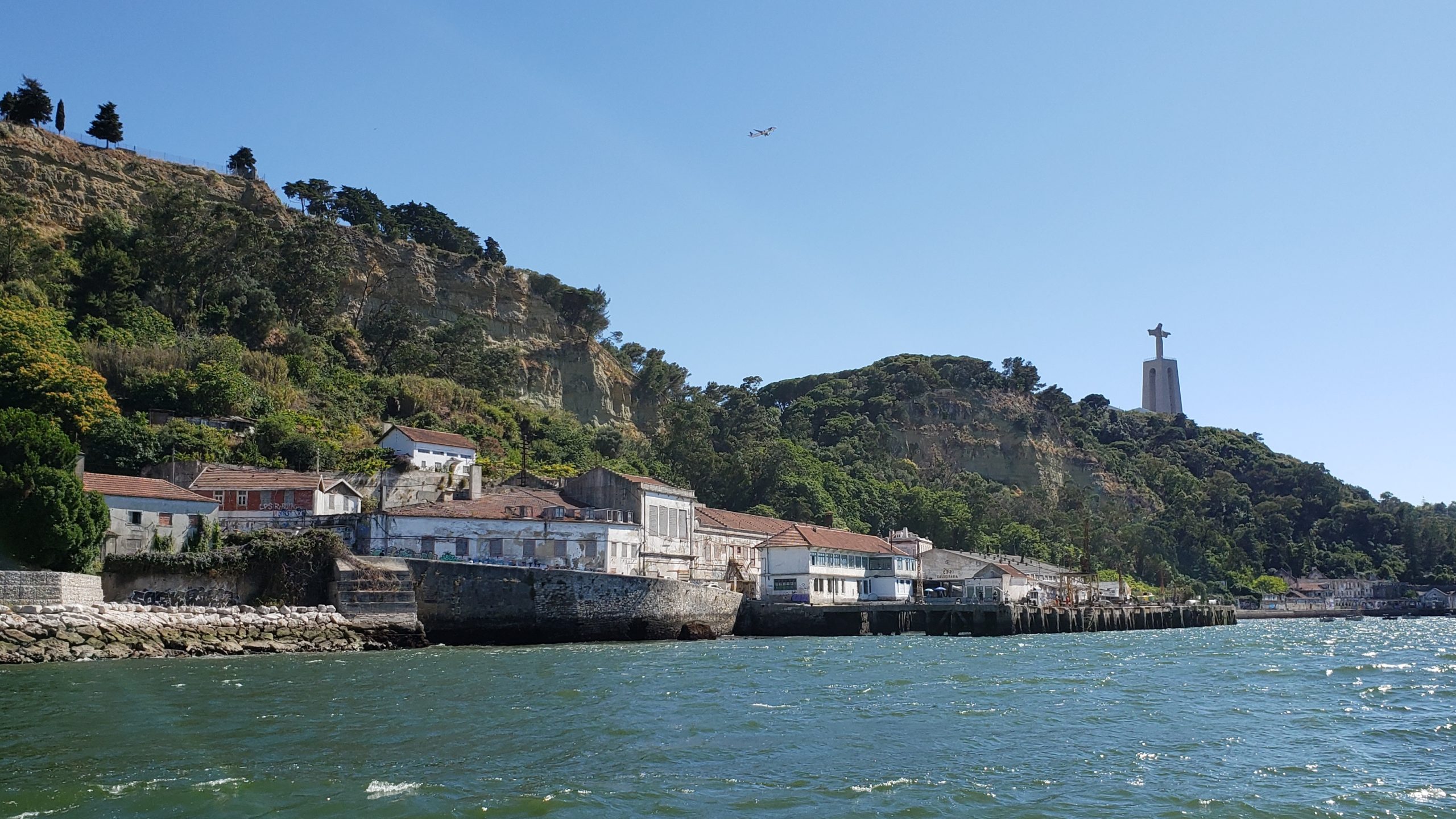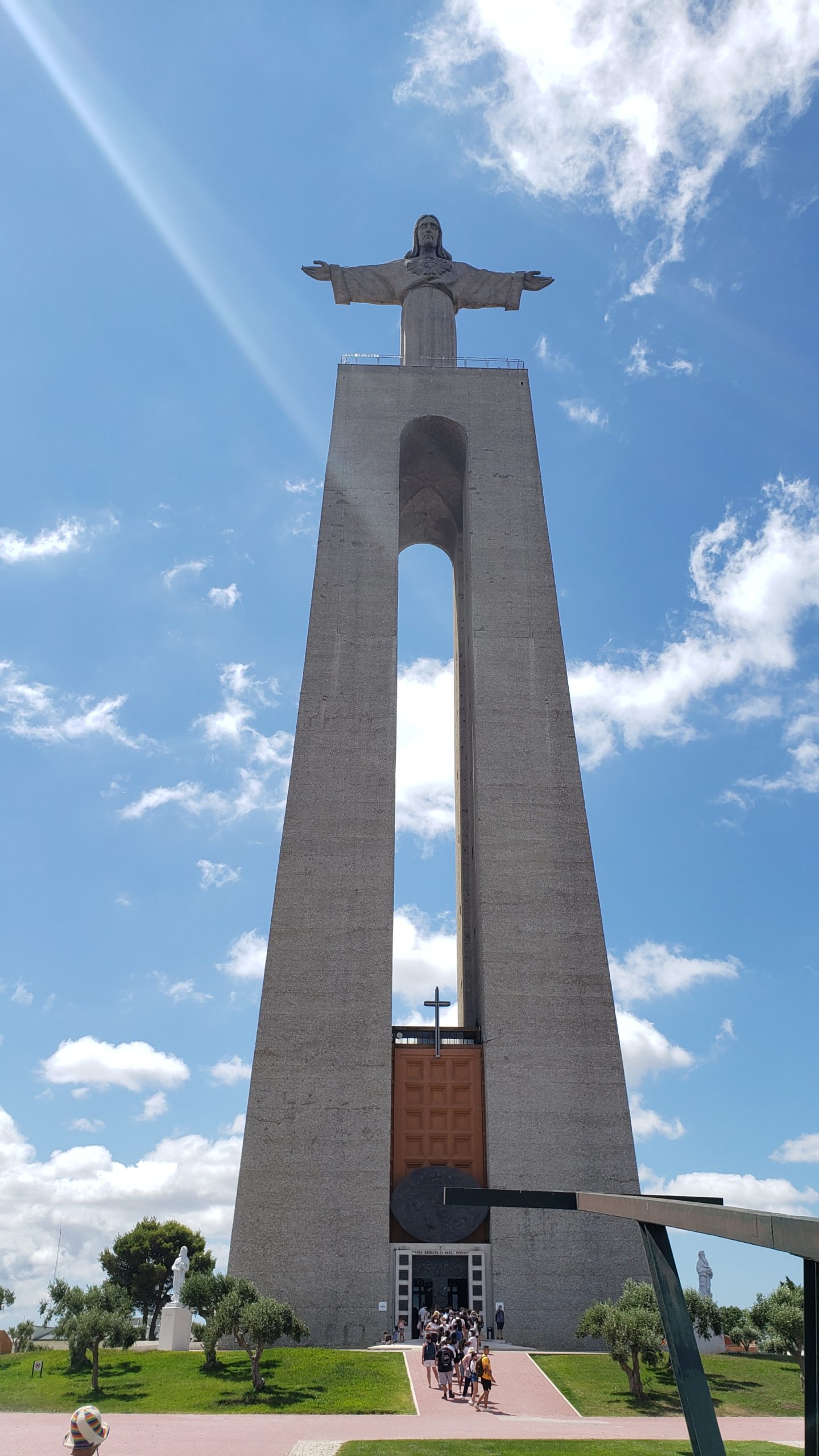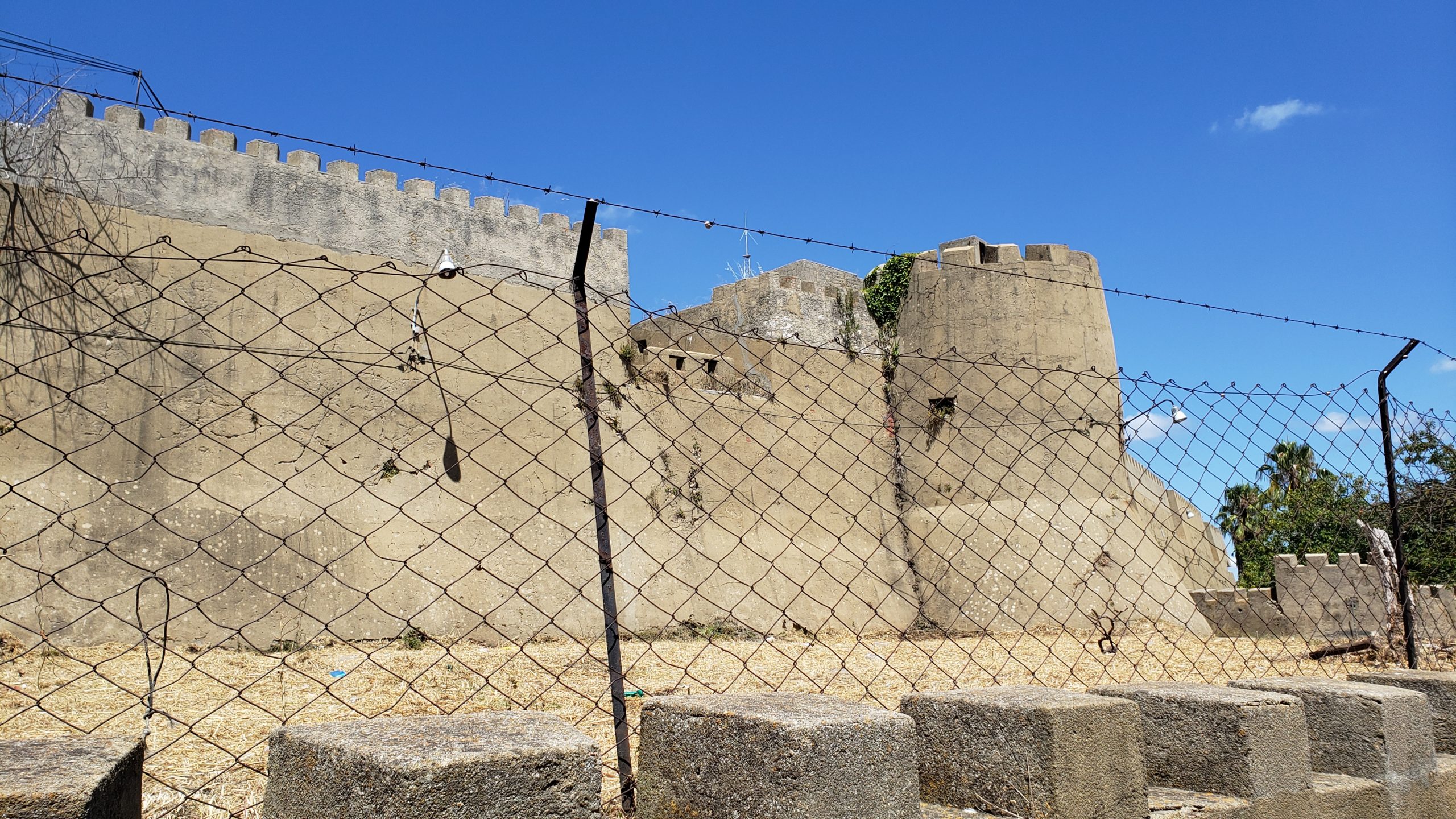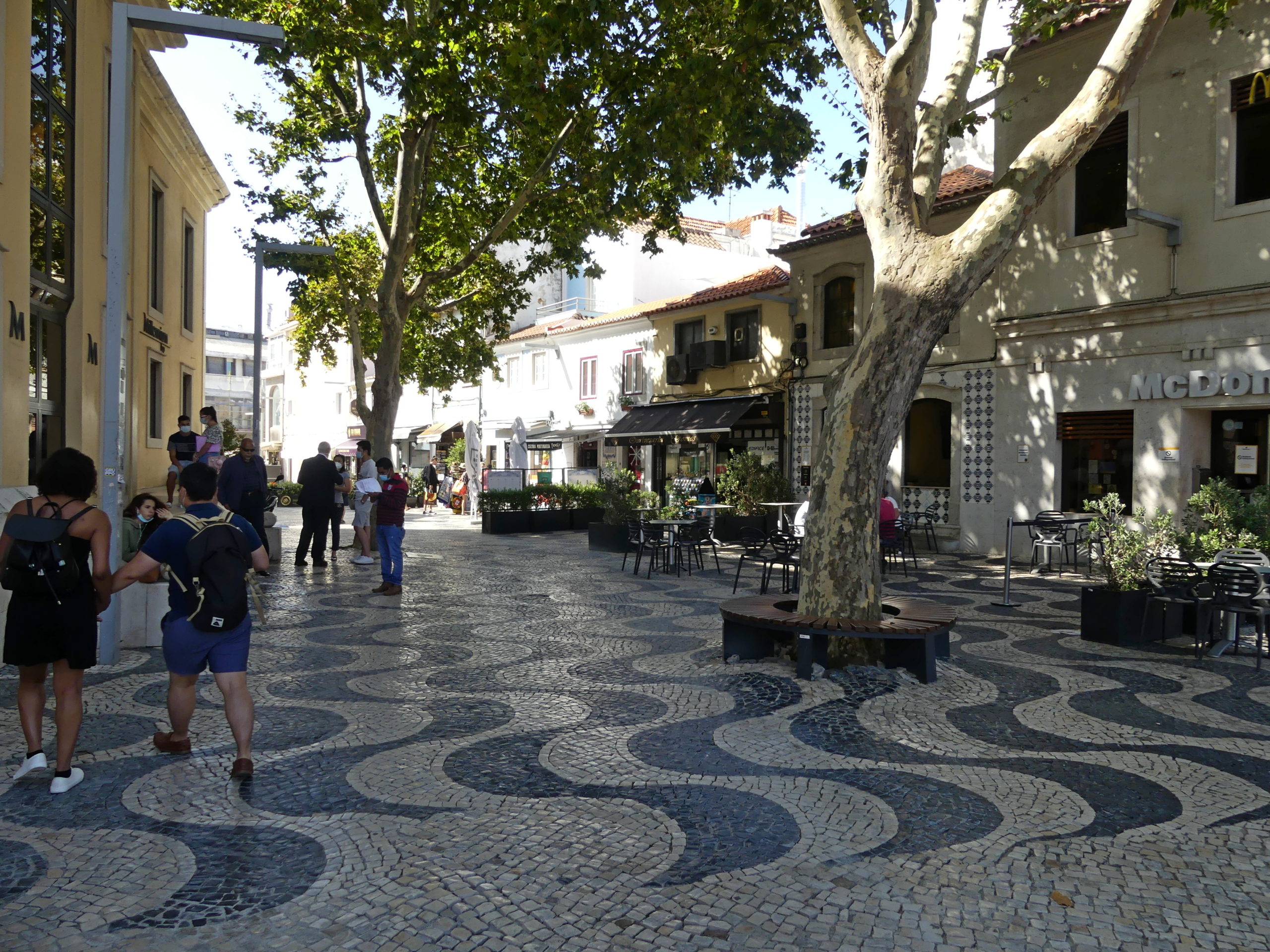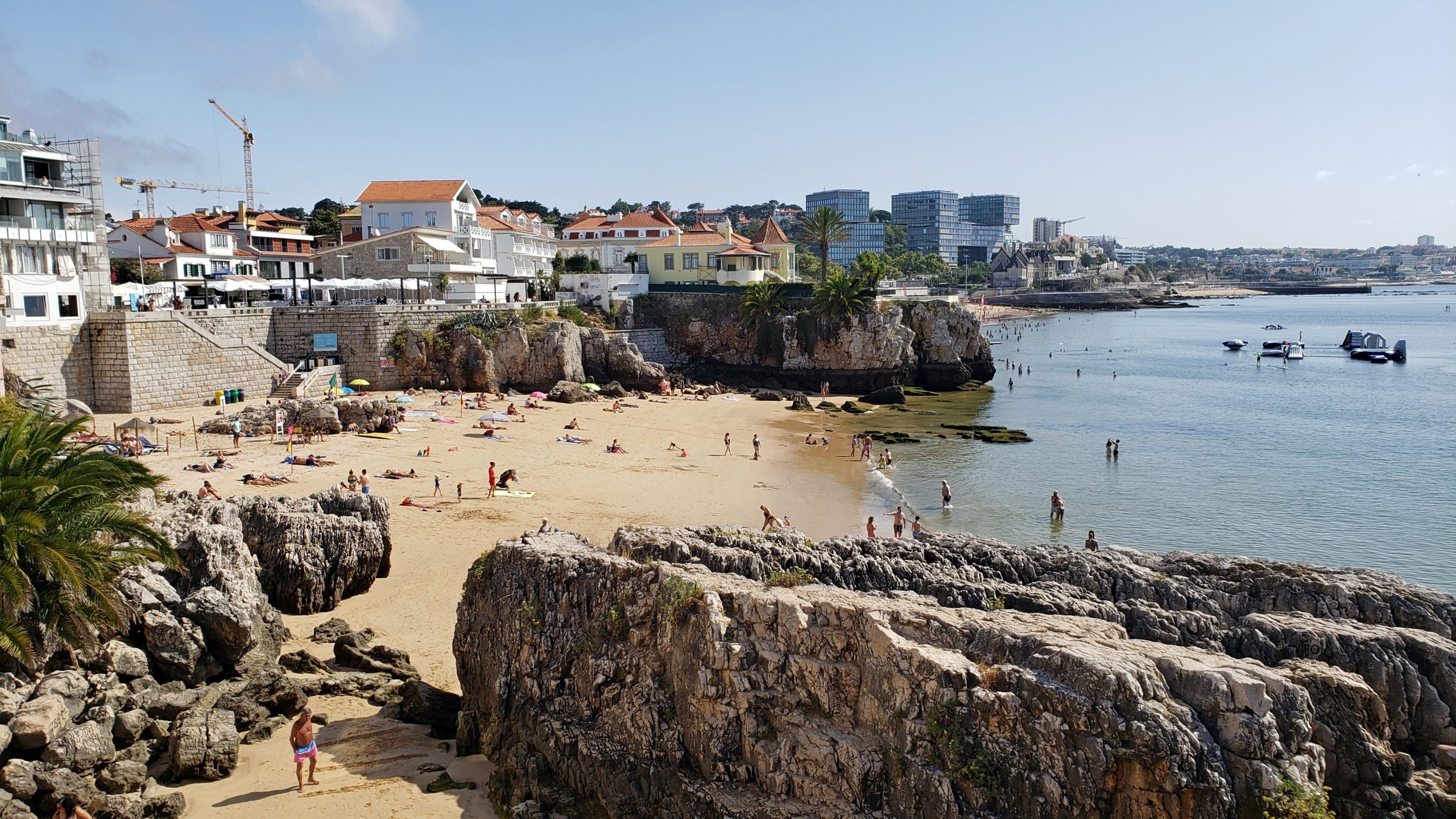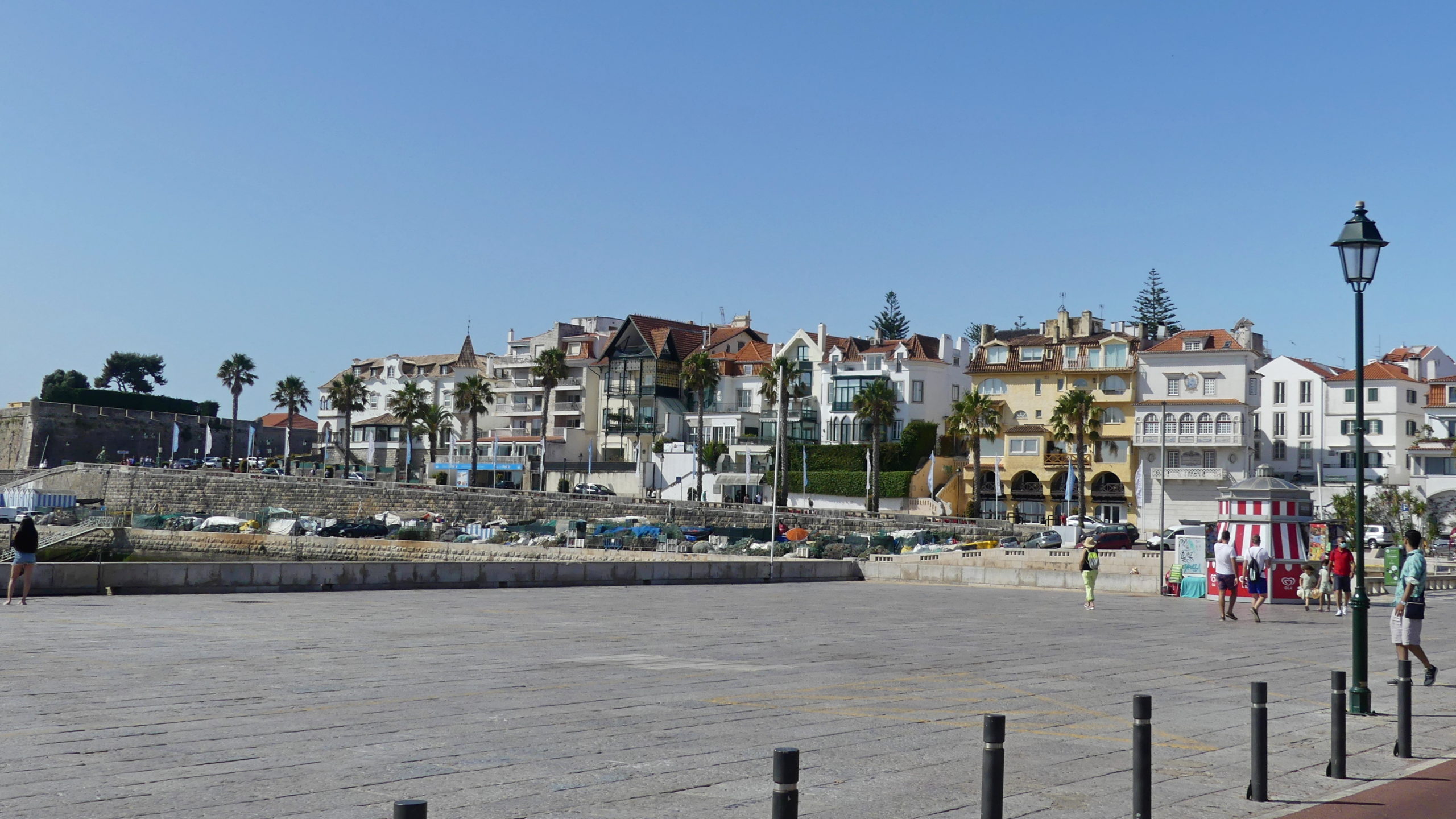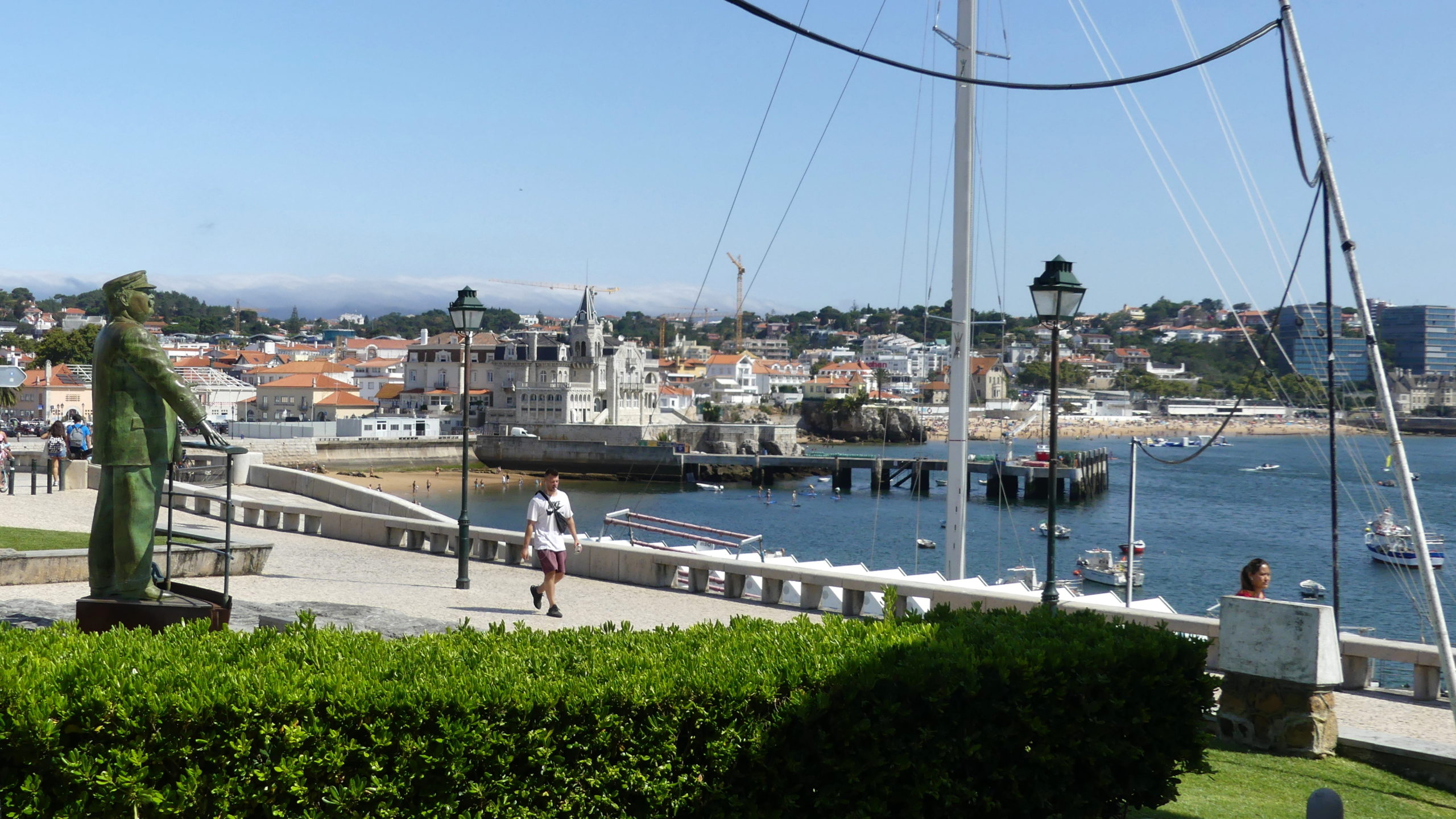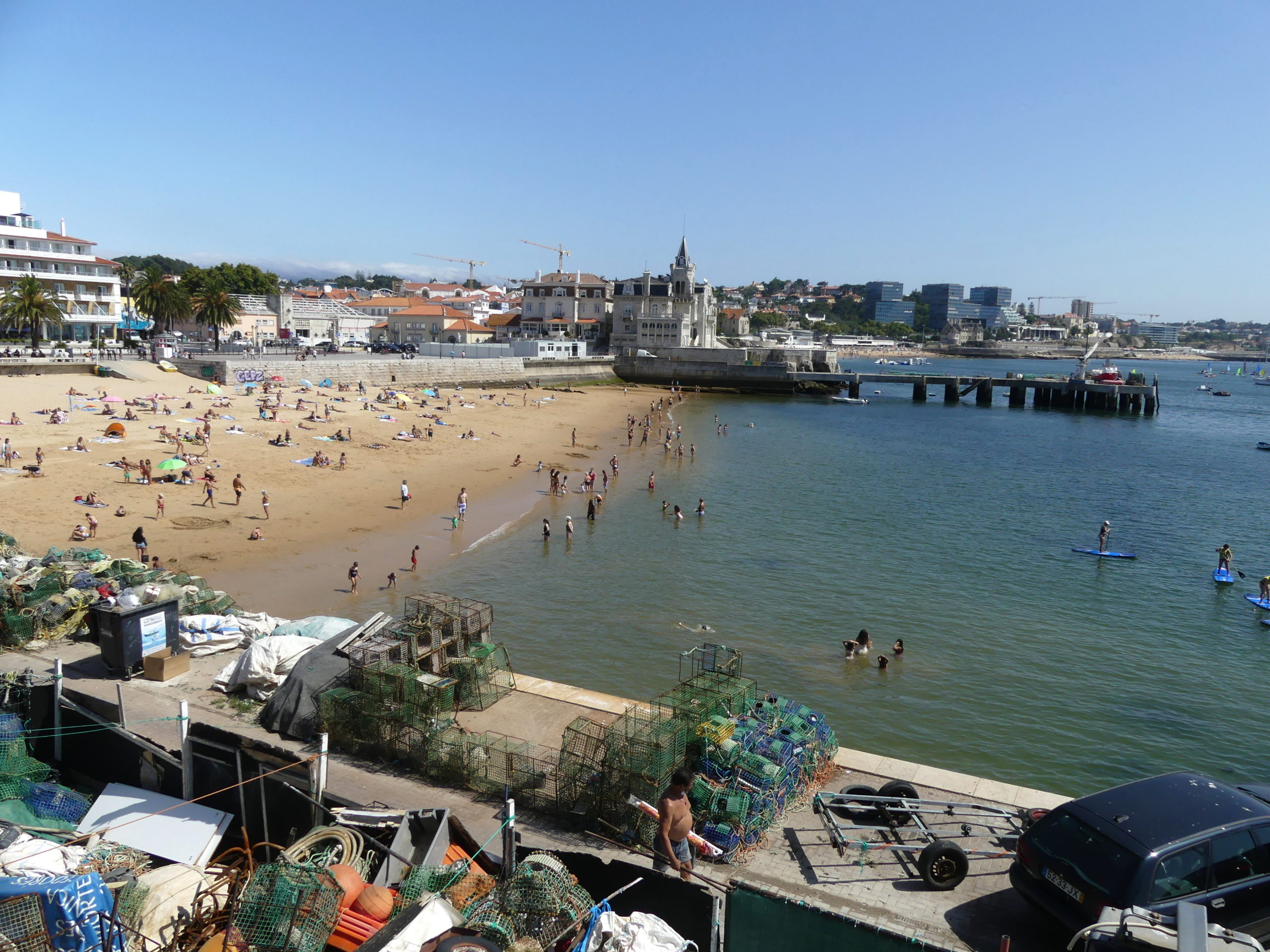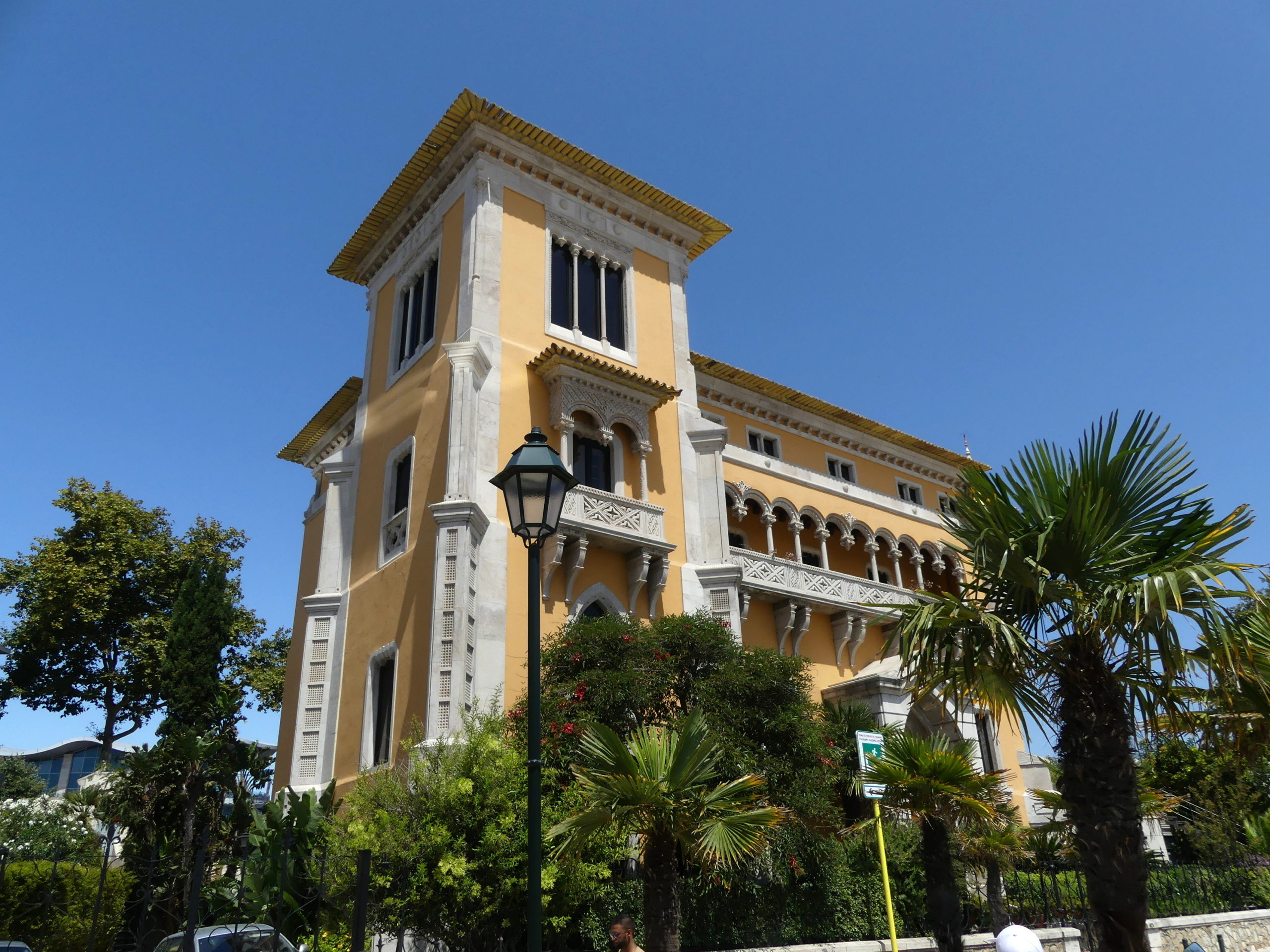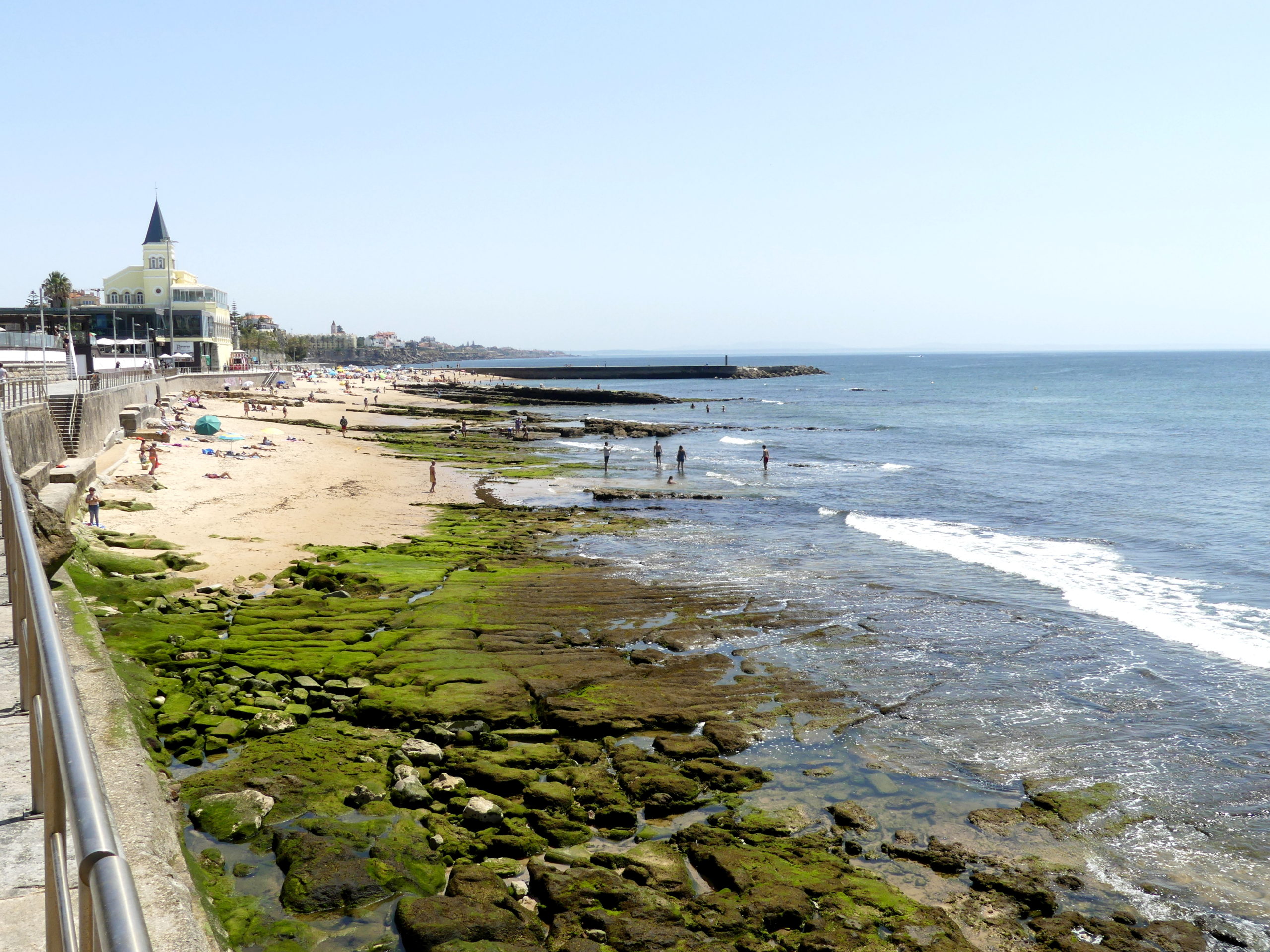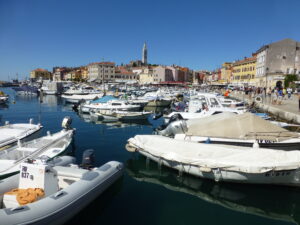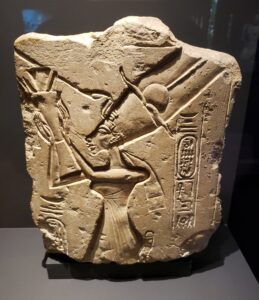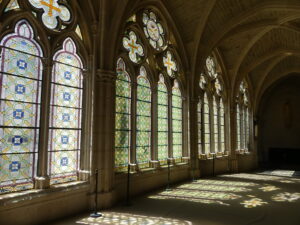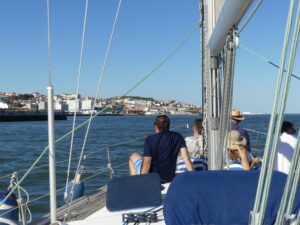In brief: Though Almada seems a lot more like central Lisbon, and Cascais nothing like it, both are close enough for locals and visitors to consider as part of the city, yet different enough to feel like an adventure.
When are you in Lisbon, and when are you not in Lisbon? All big cities share a bit of this issue, geographically and in feel, if not in political divisions. We visited two of the outskirts of Lisbon for the first time this year: Almada, a short ferry ride across the Tejo River, and Cascais/Estoril, an equally short train ride west along the Tejo shore. The experiences were very different.
Almada
Still feeling like Lisbon, Almada is a pleasant and surprisingly large town across the Tejo River from the central city, with extensive pedestrian streets and endless restaurants.
But the main event is along the river. After the quick ferry gave us our first view, the high points were indeed the heights, the top of the cliffs that loom over the river.
At the base of the cliffs of Almada, the trail along the river passes many derelict factory buildings as well as a couple of renowned fish restaurants. But it ends at an elevator that no longer functions up to the huge statue of Christ the King or at a steep climb up the 133-meter high cliff.
We encountered the statue of Christ the King at mid-day, struck with an otherworldly beam of light. Modeled after the 1931 Redeemer statue in Rio, Cristo Rei was built after World War 2 (1949 to 1959) in gratitude for the sparing of Lisbon from the destruction endured in so many other European cities. It helped that Portugal was formally neutral in the war, though in many ways aligned with British and US efforts. Famously, the country proved to be an escape valve for up to a million refugees.
The site has not been spoiled by touristy development, and the queues illustrate how strong a spiritual attraction it remains.
Yet we suspect that most visitors come for the panoramas, rather than the pilgrimage.
Here is one view of Lisbon from the platform beneath Cristo Rei, showing off several of the seven hills. From here, the bend of the Tagus River (or Tejo) in the distance looks more like the merge with the sea than the actual merge in the other direction.
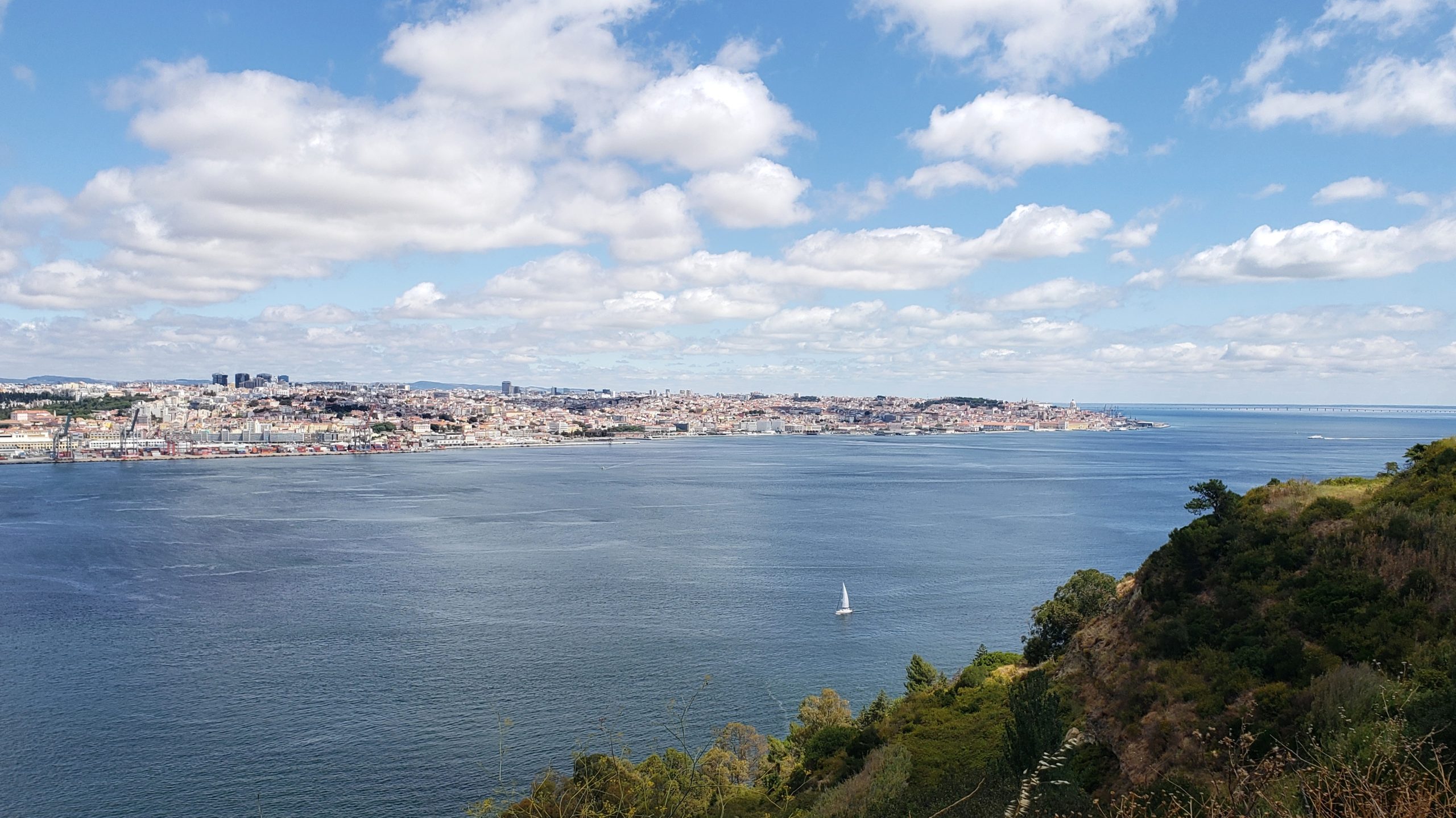
From its advantageous position atop a rocky outcrop a bit upriver, Almada’s Fort of São Sebastião de Caparica served important defensive purposes in the Middle Ages and Renaissance in coordination with the forts at Cascais and Belém, to Lisbon’s west. Almada’s proved useful until the mid-19th century, but declined after that. The fencing blocks access while the fort is being restored.
This viewpoint is clearly not at the base of the statue, but at another promontory up the river, occupied by a fancy restaurant. At the next cliff edge, another restaurant offers a panoramic view toward Lisbon. But this spot also gave us a glorious view – toward the mouth of the Tejo with an idling cruise boat – of three of the river’s most notable structures:
- the statue of Cristo Rei;
- the 25th of April bridge, which whines constantly due to the passage of cars along its metalwork; and
- distantly – about a quarter of the way from the left bridge tower to the right – the medieval Tower of Belém.
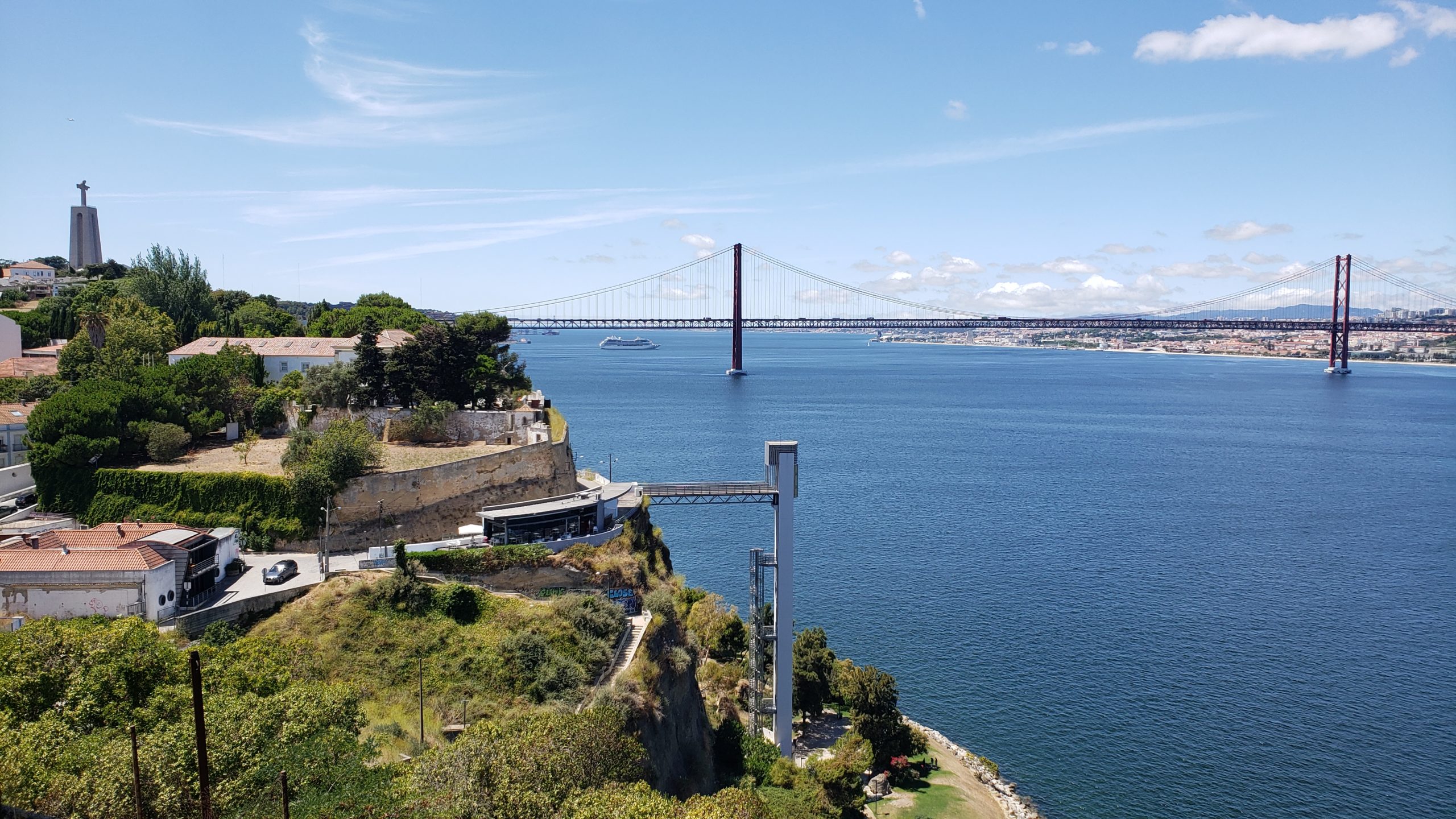
Cascais and Estoril
Tourists flock to Cascais and Estoril, because they are largely beach towns within easy reach of Lisbon, the end points of a scenic train ride west from the city. Residents like the more laid-back lifestyle, as long as they also don’t mind the tourists. For our first visit, mid-week in August, the beaches and towns were busy, but not overwhelmed. The shoreline – with the backdrop of huge villas, modern hotels, and the old fort – was clearly inviting. Normally we’d rather be farther from the beaten sand, but we could tell that these communities could be very appealing.
Here is part of the extensive set of pedestrian walkways through Cascais.
Most eateries were along the streets, away from the shoreline, except for a few located upon the boardwalk connecting towns.
With mini-cliffs jutting out of the sand to add charm, Queen’s Beach is tucked right into the central pedestrian district of Cascais.
The harbor/beach area of Cascais, fronted by colorful, tall and narrow buildings. At the left, that’s part of the huge fort, now mostly a shopping and eating mall it seems.
Historic Cascais and its beaches, as seen from the walkway from its fort
Beachgoers at the harbor/beach pay little attention to the extensive storage area used by fishing vessels which still actively work the waters out of Cascais.
One of the old villas looming above the seashore between Cascais and Estoril.
We walked the pleasant boardwalk between the two towns, where a number of restaurants let you eat with a seaview. Here we are approaching Estoril, past some very picturesque algae-covered rocks. The train runs just to the left of the frame.
Perhaps we will return for more exploration away from the crowds. Away from the shore, both towns offer gardens and pleasant walks among the residences. But the evident pleasures just aren’t as appealing to us as to the many visitors: we prefer other activities to lounging at a beach or hanging out on the streets lined with non-stop shops – however charming they are.
Though Almada seems a lot more like central Lisbon, and Cascais nothing like it, both are close enough for locals and visitors to consider as part of the city, yet different enough to feel like an adventure.
(To enlarge any picture above, click on it. Also, for more pictures from Portugal, CLICK HERE to view the slideshow at the end of the itinerary page.)


